Young Earth vs. Old Earth
Question
Could you give a quick comparison of the "young earth" view of creation and the "old earth" creation view? Please list a few pros and cons for each.
Answer
Appropriately, the "young earth" view holds that the world is only thousands of years old, whereas the "old earth" view holds that it is probably millions of years old. The difference between the two essentially stems from their different interpretations of the early chapters of Genesis.
The young earth position tends to affirm that Genesis 1 speaks of six consecutive days of approximately 24-hours each, and that its account is scientifically accurate. Many who believe in a young earth also believe that the genealogies in the Bible allow us to reconstruct a reasonable timeline of history, such that the earth is only about 6,000 years old. Others believe that the generations in the genealogies are gapped, such that their chronologies and names are selective and representative only, so that we cannot construct an accurate timeline based on them. In this view, the earth may be many tens of thousands of years old.
Some strengths of the young earth position are:
Some strengths of the old earth position are:
The young earth position tends to affirm that Genesis 1 speaks of six consecutive days of approximately 24-hours each, and that its account is scientifically accurate. Many who believe in a young earth also believe that the genealogies in the Bible allow us to reconstruct a reasonable timeline of history, such that the earth is only about 6,000 years old. Others believe that the generations in the genealogies are gapped, such that their chronologies and names are selective and representative only, so that we cannot construct an accurate timeline based on them. In this view, the earth may be many tens of thousands of years old.
Some strengths of the young earth position are:
- Genesis 1 explicitly describes normal days of approximately 24-hours each when the narrative continually says, "There was evening, and there was morning" (vv. 5,8,13,19,23,31).
- Genesis 1 appears to describe consecutive days of creation, as indicated by the refrain "the [ordinal] day" (i.e., "the first day," "the second day," etc.).
- The Sabbath commandment seems to assume consecutive 24-hour days of creation when it sets forth the pattern of six consecutive 24-hour days of labor (Exod. 20:9-11).
- The potential for gaps in genealogies allows for the dating human ancestry postulated by modern science.
- Genesis 1 is highly stylized literature, unlike the historical narratives we find in Scripture. It is quite similar in many respects to poetry, though it is also unlike the poetry in Scripture in some ways. That we cannot clearly identify its genre implies that we cannot clearly identify its communicative style or intentions. In other words, we cannot be certain that it intends to communicate the timing and order of creation.
- Modern science says that the earth is far more than thousands of years old, and some of its arguments are fairly compelling. The young earth position has postulated many speculative rebuttals to modern science, such as erroneous data and/or analysis, potential changes in the laws of physics, and demonic tampering with the earth itself (e.g., the fabrication of dinosaur bones). Most of these rebuttals are less than compelling.
- Genesis 1 and Genesis 2 present different (though not incompatible) accounts of creation, and only Genesis 2 claims to be an actual account of creation (Gen. 2:4). This may imply that Genesis 2 is to be taken as literal history, whereas Genesis 1 may be an introductory poem or hymn.
Some strengths of the old earth position are:
- It corresponds well with the assertions of modern science.
- It does not require strong correspondence between the interpretation of the stories of Genesis 1 and Genesis 2.
- It does not require a certain decision regarding the genre and intentions of Genesis 1.
- It presents a less compelling basis for the Sabbath commandment of Exodus 20:9-11.
- Those versions that insist that a day is an age do not consistently interpret the text. By insisting on order, they concede that the text intends to communicate literally with regard to order. But at the same time, they deny that it intends to communicate literally with regard to timing ("there was evening, and there was morning," etc.). The interpretive judgments appear to be determined by the desire to make interpretation correspond to science, rather than by the text itself, or else appear arbitrary.
- Those versions that speak of a punctuated creation of non-consecutive days have a similar inconsistency to that mentioned immediately above. Specifically, they accept the text at face value with respect to order but not with respect to timing. Again, this seems to be either an accommodation to science or arbitrariness.

Ra McLaughlin is Vice President of Finance and Administration at Third Millennium Ministries.











 Follow us on Instagram
Follow us on Instagram
 Commitment to Transparency
Commitment to Transparency